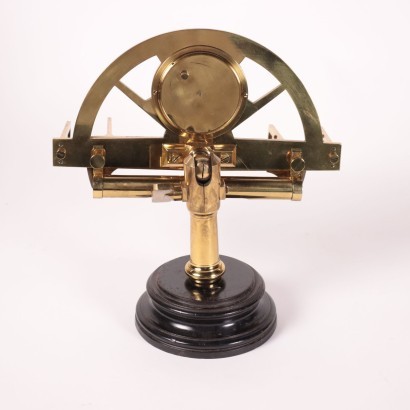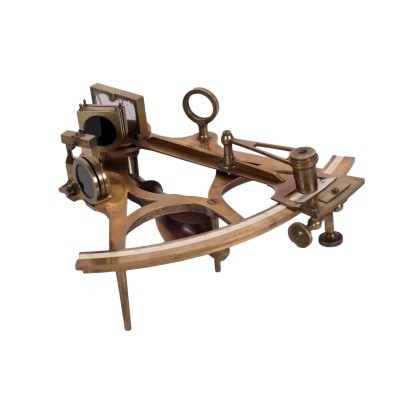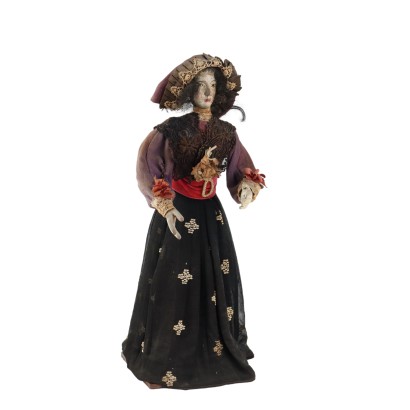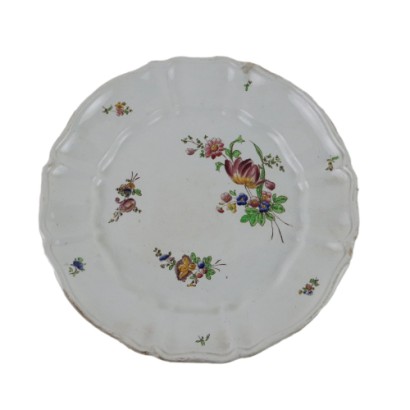Stanley London Geodesy Graphometer With Compass London 20th Century
Features
Age: 19th Century / 1801 - 1900
Origin: Londra, England
Main essence: Walnut
Description
Brass geodesy graphometer, signed "Stanley London", with compass whose bottom is engraved with a compass rose indicating the 4 cardinal points and a broken bubble level. It has an inverted double diopter, as a goal for the fixed reference point, in the lower part. Another movable diopter with reading nonius in the fixed goniometer, the latter having a scale from 0 to 180° and from 180° to 0, indicated from 10° to 10°, semi-circular shape. Contained in a walnut box.
Product Condition:
The object shows signs of wear due to age. It may require restoration. Any damage or loss is displayed as completely as possible in the pictures. Product with a Certificate of Authenticity and Lawful Origin.
Dimensions (cm):
Height: 27
Width: 25
Depth: 18
Additional Information
Age: 19th Century / 1801 - 1900
19th Century / 1801 - 1900Main essence: Walnut
Walnut wood comes from the plant whose botanical name is juglans regia , probably originally from the East but very common in Europe. Light or dark brown in color, it is a hard wood with a beautiful grain, widely used in antique furniture. It was the main essence in Italy throughout the Renaissance and later had a good diffusion in Europe, especially in England, until the advent of mahogany. It was used for solid wood furniture and sometimes carvings and inlays, its only big limitation is that it suffers a lot from woodworm. In France it was widely used more than anything else in the provinces. In the second half of the eighteenth century its use decreased significantly because mahogany and other exotic woods were preferred.Material:
Brass
Glass
Other customers have searched:
Se ti interessano gli oggetti d'arte e antichi Scopri qui tutte le presentazioni degli oggetti più belli, eleganti e preziosi su FineArt by Di Mano In Mano
Leggi di più
Sull'antiquariato in generale dai un'occhiata anche a:Classic Monday: da un pezzo dei nostri magazzini alla storia dell'antiquariato
L'antiquariato dalla A alla Z: il Dizionario dell'Antiquariato
Il dizionario dell'antiquariato - Lastronatura
Il dizionario dell'antiquariato - Mascherone
Il dizionario dell'antiquariato - Natura morta
Il dizionario dell'antiquariato - Opificio
Il dizionario dell'antiquariato - Pastiglia
Il dizionario dell'antiquariato - Savonarola
Il dizionario dell'antiquariato - Rosone
Product availability
The product can be seen at Cambiago
Immediate availability
Ready for delivery within 2 working days from ordering the product.



















































